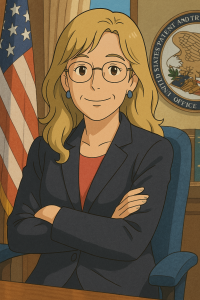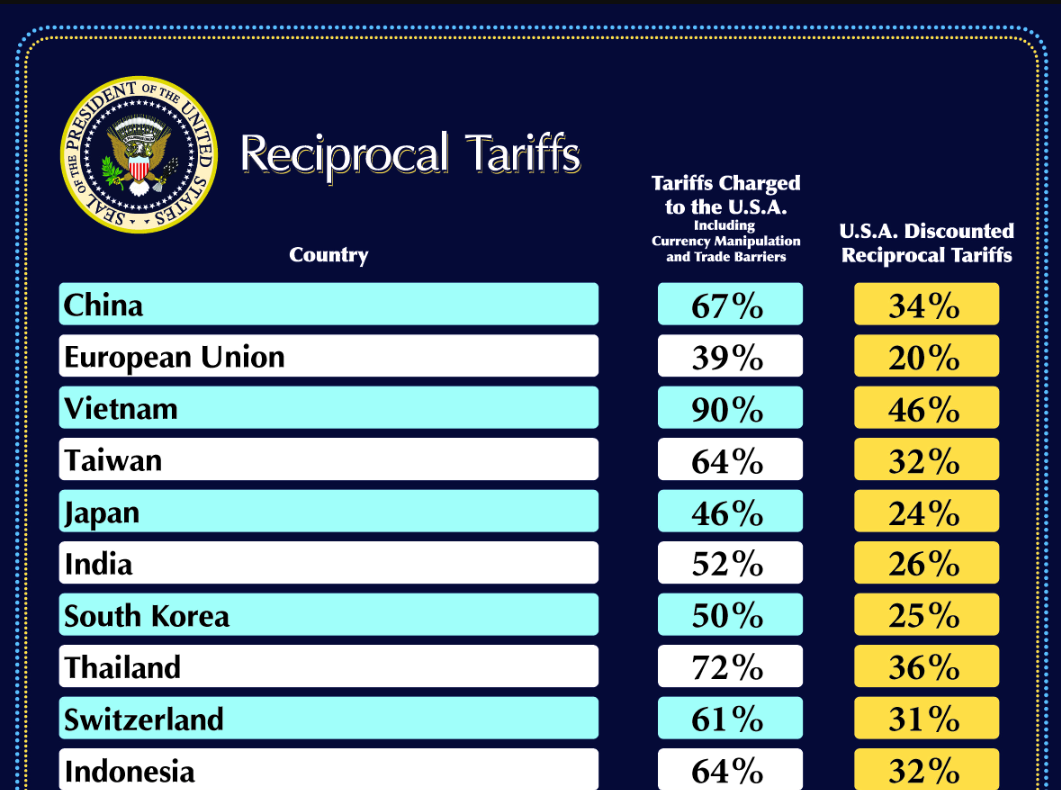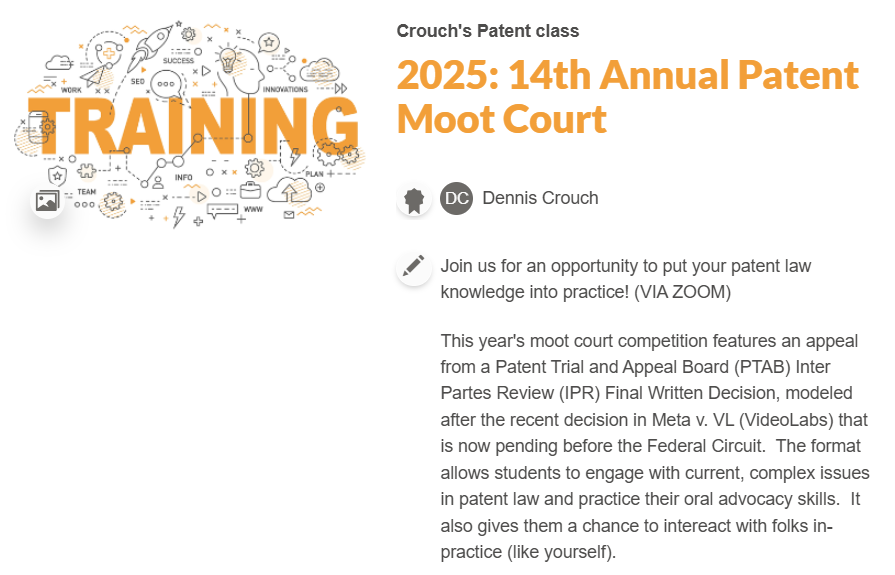All posts by Dennis Crouch
Federal Circuit Affirms: Rule 60(b) Motion Filed Too Late to Revive Patent Case
Masters of Their Own Petition: The Federal Circuit’s Latest Stance on AAPA
The Priority Paradox: In re Floyd Highlights the Dual Standards of Written Description and Anticipation
The Hughes-Reyna Divide Continues: Dongkuk v. US
by Dennis Crouch
In a new decision released April 21, 2025, the Federal Circuit has given us another example of the jurisprudential divide between Judges Hughes and Reyna–something that I’ve followed across numerous opinions. Dongkuk v. US continues this pattern in a case involving antidumping duties on Korean wind towers.
Anti-Dumping Law: Under the Tariff Act of 1930 (19 U.S.C. § 1673 et seq.), the Commerce Department investigates whether foreign manufacturers are selling products in the U.S. at less than fair value (“dumping”). This process begins when a domestic industry files a petition simultaneously with both the Commerce Department and the U.S. International Trade Commission (19 U.S.C. § 1673a(b)). Commerce compares U.S. export prices with either home market prices (19 U.S.C. § 1677b(a)(1)(B)) or a “constructed value” when home market sales are inadequate or below cost (19 U.S.C. § 1677b(e)). The constructed value calculation includes the cost of materials and fabrication, selling expenses, profits, and packaging costs (19 U.S.C § 1677b(e)(1)-(3)). If Commerce determines dumping has occurred, it calculates a “dumping margin” and imposes corresponding antidumping duties (19 U.S.C. § 1673). Commerce’s final determinations are first appealed to the Court of International Trade (CIT) and then to the Federal Circuit, which has exclusive jurisdiction over appeals from the CIT pursuant to 28 U.S.C. § 1295(a)(5).
In Dongkuk, the Wind Tower Trade Coalition filed a petition alleging Korean utility-scale wind towers were being dumped in the U.S. market. Commerce selected Dongkuk S&C (DKSC) as the mandatory respondent and ultimately determined its products were being sold at less than fair value, imposing a 5.41% antidumping duty. The CIT affirmed (after some back-and-forth). On appeal, the Federal Circuit has now also affirmed, with Judge Hughes writing for the majority and Judge Reyna in dissent. (more…)
Seymour’s Shadow: Reviving the Supreme Court’s Standard for Prior Art Enablement
“Do it on AI” claims are Abstract Ideas
I Know I’m Going to Love a Brief That Repeatedly Cites Marbury v. Madison
Patent Issuance Timeline Accelerated
PHOSITA is no Ordinary Person
Jack Dorsey and Elon Musk Call for Abolition of “All IP Law”
In a characteristically terse post on X, twitter co-founder Jack Dorsey declared “delete all IP law.” Elon Musk quickly agreed with Dorsey’s statement. It is unclear to me which of these sub-declarations are included within the “all IP law.”
- Delete all Patent Law?
- Delete all Copyright Law?
- Delete all Trade Secrecy Law?
- Delete all Trademark Law?
- Delete all rights of publicity protecting individuals’ name-image-and-likeness?
Musk has previously remarked that “patents are for the weak.” In a sense, he’s right—but perhaps not in the way he might intend. That “for the weak” statement can be made of all property rights and the rule of law more generally. The “strong”—those with immense capital, entrenched market positions, and even private security forces—can often get by without formal legal protections. Might makes right. But the rule of law exists precisely to protect those without such power. Intellectual property rights, like patents and copyrights, offer individuals and small enterprises a measure of leverage—a tool to bargain with or push back against more powerful entities. That is a feature of the system, not a bug. (more…)
Silicon Valley Judicial Ties: The Cellspin Recusal Case
Judge Shopping vs. Judge Dodging: Federal Circuit Denies SAP’s Transfer Request
When Five Years of Use Isn’t Enough: The High Bar for Highly Descriptive Marks
Non-Tariff Countermeasures to U.S. Tariff Hikes: IP, Services, and Investment Implications
Federal Circuit on Trade Secret Remedies in AMS-OSRAM v. Renesas
No Provisional Rights for Expired Patents
Judge our 14th Annual Patent Moot Court Competition
Calling IP Attorneys — Come Judge our 14th Annual Patent Moot Court Competition taking place via Zoom on April 14th and 16th, 2025. This is a memorable capstone experience for the students but it requires your expertise.
This year’s group is larger than usual and that means I need more judges. No Presidential Appointment is necessary, but you do need a JD, IP law experience, and most importantly passion for supporting the next generation of attorneys. Connect with talented law students and other judges passionate about patent and IP law; Engage with complex, current issues in patent law; etc.
I have modeled the competition after a recent pair of PTAB final written decisions in Meta v. VL (VideoLabs), both of which include a dissenting opinion by Judge McKone. The appeals are currently pending before the Federal Circuit with both sides expected to file cross appeals.
I’ll provide a comprehensive judge’s brief and preparation meeting so that you don’t have to.
Multiple time slots available (evenings on April 14th and 16th)
Interested? Sign up here: https://lnkd.in/gZPG8Us9
Please share with colleagues who might be interested in contributing to legal education.
= = =
Here are the IPR Decisions that serve as the basis of the moot court.









